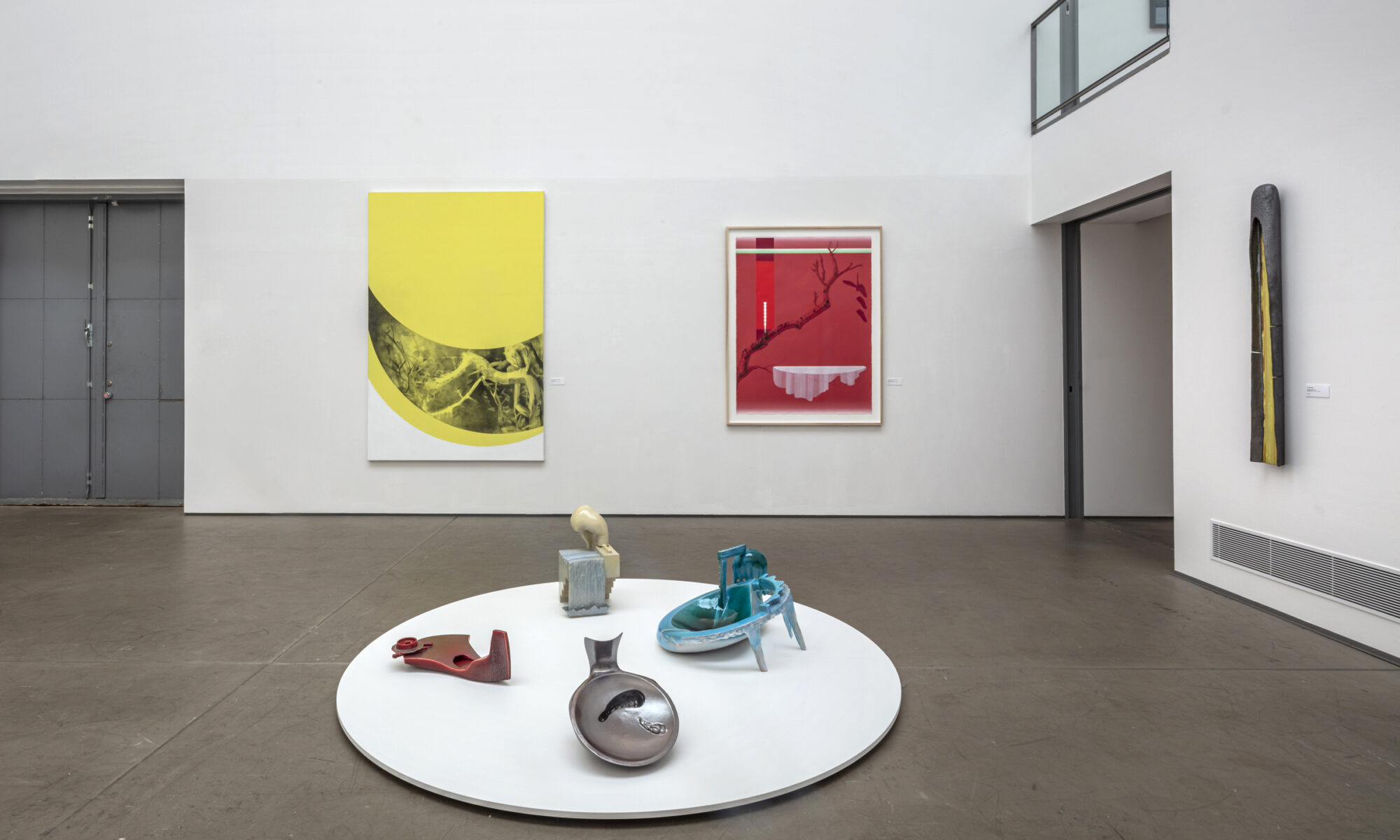By Ditte Vilstrup Holm
Like a light, but intensive touch. This is the sensation brought about by Lisbeth Eugenie Christensen’s paintings and drawings. Her works are like a hand that gently strokes the cheek, like sun beams diffusing warmth in the skin while you move from the shadow into the light, or like dark, cool water that surrounds the body in a late summer nocturnal swim.
The images seem to be composed with the same ease. Simple, discrete elements slowly establish the stirring sensation of actual bodily touch. First, a sunny yellow background that turns into mirrors in the ripples of the surface of a sea. Then an island, a piece of land in the middle of the sea, and branches, simple plants that rise from the island and the sea, only to grow into a raft, a ladder, moving up toward the sun.
But really there are no more than abstract shapes in the images. The shapes are created in response to each other and they establish an atmosphere that unfolds in the image. Eugenie Christensen’s works are psychological spaces created by abstract means of expression, and as such they have the ability to appear at one and the same time ama-zingly beautiful and indefinable terrifying like a bygone sensation from a moment just before you awoke. A faint metallic blue bridge unfolds across the middle of a canvas. It rounds off a landscape stretched out between the four edges of the canvas. A brown rocky formation appears in one corner, while a mountain horizon emerges above. At the bottom clear blue rushes rock from side to side. They are connected with a forest green opening above by means of a flowery festoon.
The water surrounds the scene in its entirety, makes up its background and touches it with its pale whiteness. This is the stillness of moonlight that crystallises everything. Earlier there was the stirring sensation of sun beams on your face that almost grew too forceful, too sharp, threatening to burn you up. In other works you are surrounded by water, or a sheet, hung out to dry, randomly blows up to envelop your body.
Eugenie Christensen’s paintings and drawings are composed of repeated elements: the plane surface that encompasses everything else or presses it out into the edges of the composition; the human bones that in their elaborations are both unlikely beautiful and at the same time markedly uncanny; and the plants, the flowers, the delicate elements that turn into branches, trees or ladders, almost bonelike structures, or softens up like rushes in the water, like wavy long hair that floats with the stream. The elements are rediscovered from composition to composition. In each instance they evolve anew creating new visual effects and changing sensations to accompany them. Compact acrylic paint meets faint pencil drawings, while clearly drawn shapes confront fray water colour. Large surfaces are broken up by shadow modulations, while sharp lines create new relations between the elements.
The modulations of the surfaces underline the sensation conveyed in the compositions. Kitschy seventies flower design hangs in the top of a painting. Below a square of earth appears as a muddy plane. Dark brown and moist it blurs into stains at the edges of the image. The surface is heavy and inscrutable at some places, while playful and porous at others. This is wall paper brought to live, while the sand slips through the fingers.
There is sharpness and softness in Lisbeth Eugenie Christensen’s images; coldness and warmth, lightness and darkness, playfulness and seriousness, life and death. It is not displayed directly, not precisely and affirmatively, but simply suggested in colours and shapes, in surfaces and shadows. In the works of Eugenie Christensen one senses the emo- tional complexities, from chills to well-being, from emptiness to intensive happiness, that make up the fabric of a life lived, experienced and noticed.
Translated by Ditte Vilstrup Holm.
